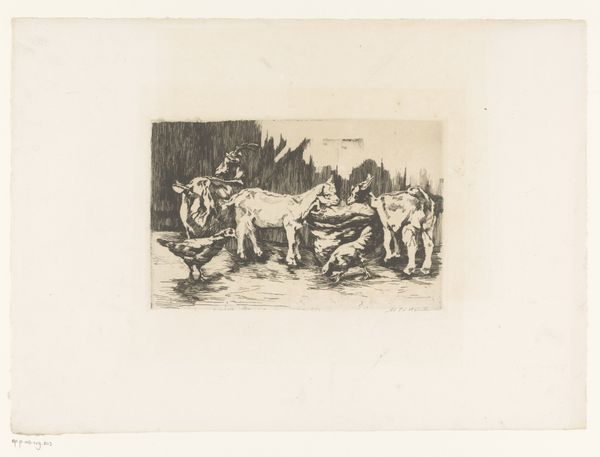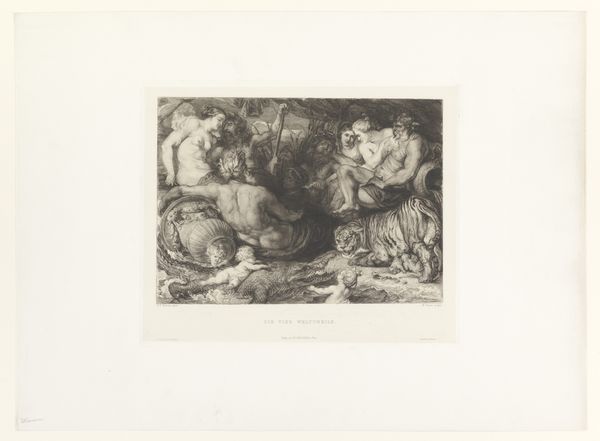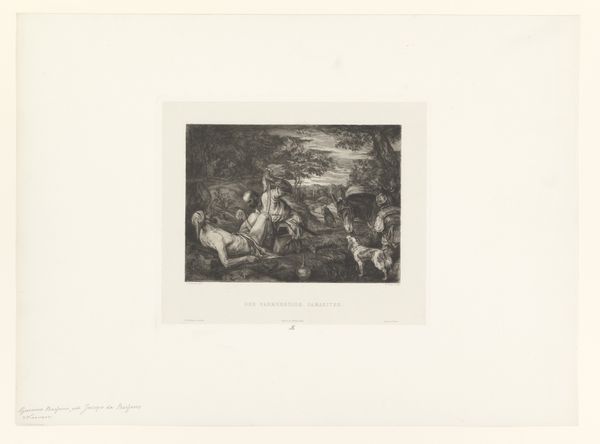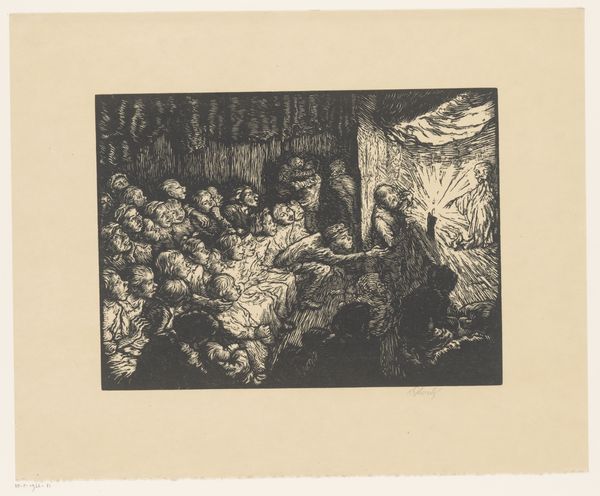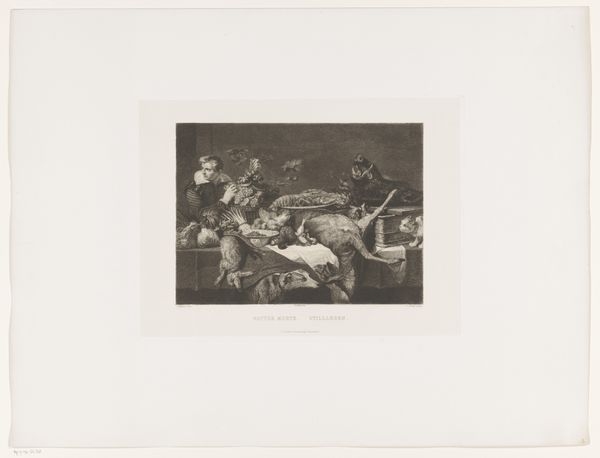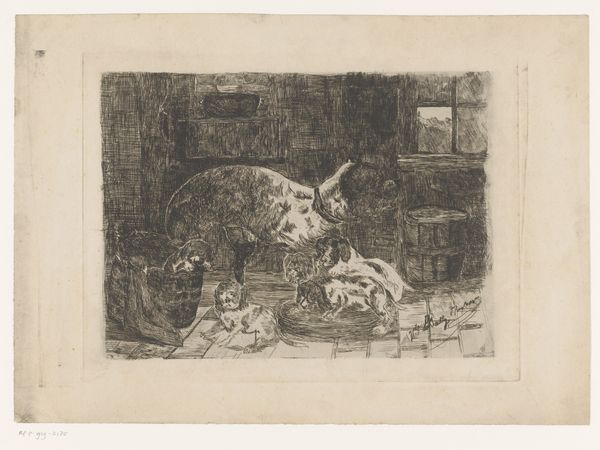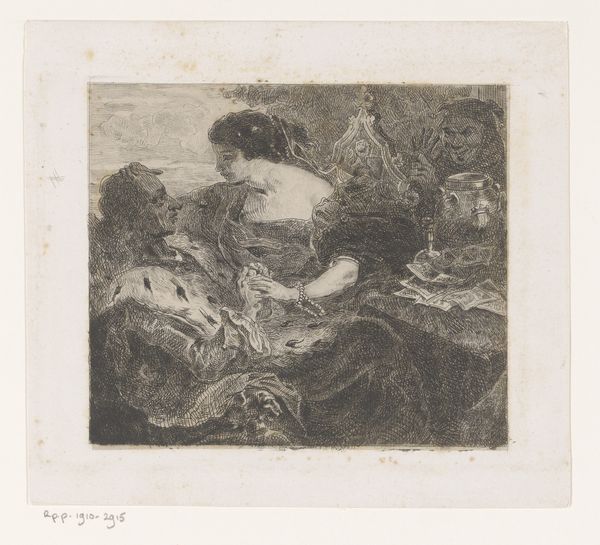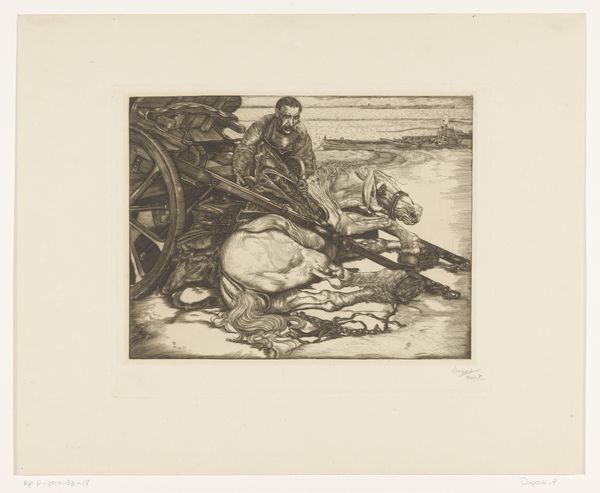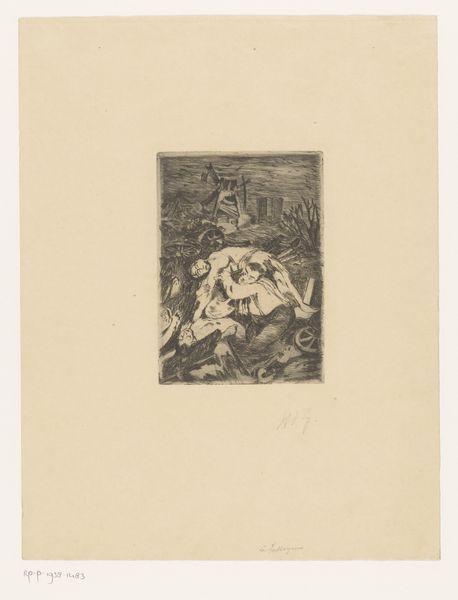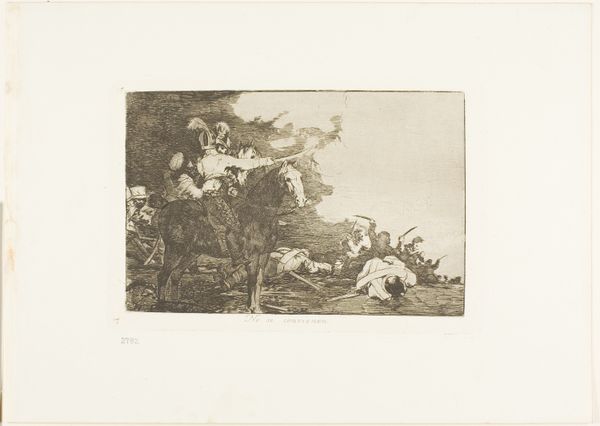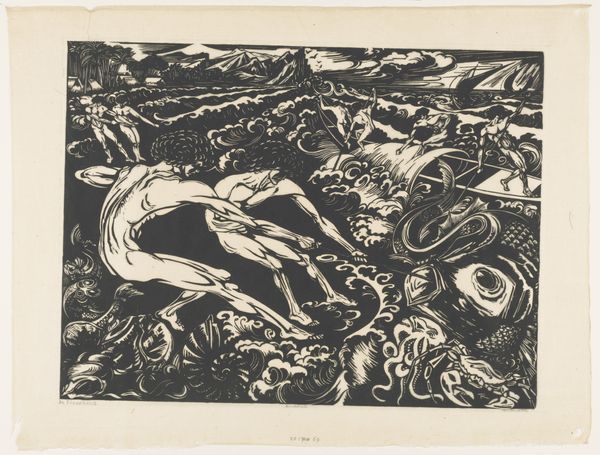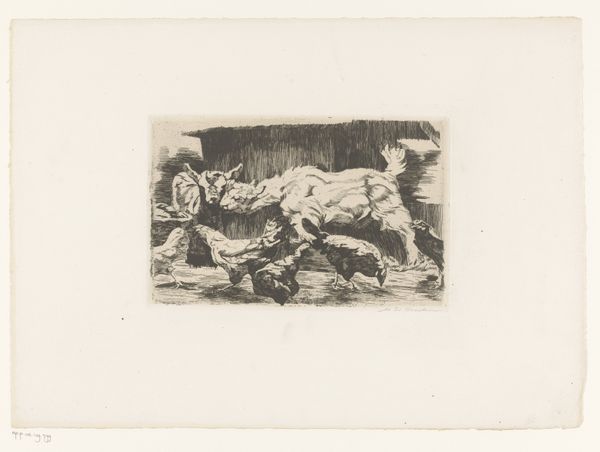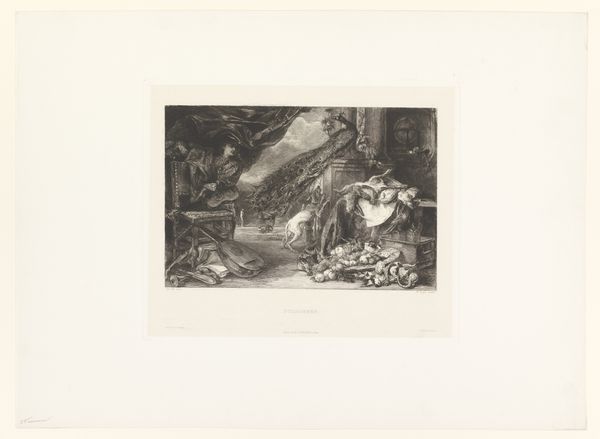
Dimensions: height 275 mm, width 347 mm
Copyright: Rijks Museum: Open Domain
Editor: This is "Slagveld met lichamen op een hoop," or "Battlefield with bodies in a heap" by Henri de Groux, made around 1890-1893. It's an etching, which is…intense, given the subject. It feels almost overwhelming; a chaotic mess of bodies. What do you see when you look at it? Curator: I see a powerful statement on the means of destruction, less about heroic sacrifice and more about industrialised death. Look closely at the process: etching, a relatively reproducible medium, allowing for a wider distribution of this grim imagery. How does that contrast with, say, a single heroic oil painting of a battle? Editor: Well, an oil painting would be unique, almost celebrating the event. This… the printmaking makes it feel almost like war propaganda, but against war itself, right? The material is sort of implicating mass production. Curator: Exactly. Consider also, what does the use of etching, traditionally a "lesser" art form compared to painting, say about the artistic establishment's perception of war imagery? It challenges that traditional hierarchy by taking a "low" art medium and making a significant social commentary. Editor: So, the *process* of creating this image – the choice of materials and printing – is part of the meaning? It's not just the image itself. It becomes more than just the depiction. Curator: Precisely. De Groux is critiquing not just the violence of war but the entire system that perpetuates it, including how it's represented and consumed as an image. Consider, too, the accessibility that the etching provides in potentially making the cost of materials affordable and within reach to disseminate this impactful artwork on war. What labor went into its making and what kind of labor fueled that conflict? Editor: I hadn't thought about that before, about how the materials themselves play such an important role in interpreting a work like this. That it shifts its message drastically. Curator: Material analysis shifts everything. It reframes the work from solely an aesthetic experience to a critical engagement with the means of production and social consumption.
Comments
No comments
Be the first to comment and join the conversation on the ultimate creative platform.

